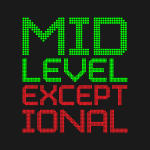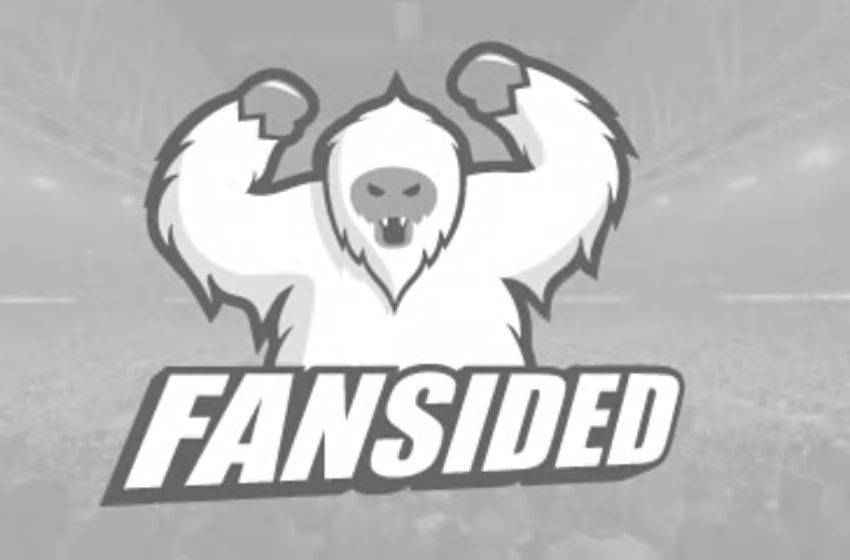Chase Down Block: How the NBA Is Catching the NFL
Make no mistake about it. The NFL is King in American sports. Baseball may be America’s pastime, but football is what draws Americans’ eyes and their wallets. Moving forward however, the NFL’s perpetual hold on the top spot may not be a foregone conclusion.
The race for second place in the American sporting landscape is squarely between the MLB and NBA. Major League Baseball has long generated more revenue, but the NBA’s new TV deal – 9 years, $24 billion – puts both leagues on equal revenue footing overall, and vaults the NBA comfortably into second place behind the NFL in terms of TV money. From a fanbase size and overall appeal standpoint, it appears Major League Baseball is failing to grow at the rate the NBA is. The NBA dominates all comers in social media, boasting more Twitter followers, YouTube subscribers, and Facebook fans than any sports league in the world. It’s not unreasonable to use those figures as a proxy for the leagues’ popularity among younger fans. The NBA is doing all it can to engage and grow its young fan base, whereas the MLB, and its digital arm MLBAM, seem set in the 1940’s by comparison. When it comes to fan interest, it appears the MLB may be at a plateau while the NBA is racing onward and upward, with the NFL in its sights.
Over the last six months, the NFL has taken several large steps back with its fans. Domestic violence scandals, long-term brain damage, and the smoldering trash fire we know as Roger Goodell have forced Americans, for the first time in a long time, to question their own interest in the game they know and love. While we won’t be able to measure what impact if any this is having on the league’s revenue and overall brand image with fans, what these off the field issues have done is open the door to competition for the top spot in American sports. The NBA has recognized this opening and taken several important steps to close the gap.
Interest in the NBA has never been higher. While the league’s big boy TV deal is certainly evidence of that, there are other factors to consider. The league’s talent pool may be at an all-time high. The last remnants of the previous generation of stars – Kobe, Dirk, and Duncan – are still playing at a high level. LeBron James is a transcendent player the likes of which we’ve not seen since Michael Jordan. His generation has droves of players who rank among the league’s best. And the most recent draft was purported to be one of the most talent rich in history. That’s three generations of players producing at a high level.
But beyond just athletic talent, the NBA is a stars’ league. NBA players don’t wear hats or helmets. Their faces are recognizable globally. According to Forbes, of the 65 athletes worldwide who made at least $1 million in endorsements last year, 15 were NBA players. The NFL has less than half that many players garnering seven figures in endorsements. The best comparison for the NBA in terms of star power is the European soccer, but even the best of those leagues boast only a handful of truly global stars. Put simply, the NBA has more star power than any league on the planet.
And speaking of the planet, the NBA has truly global appeal. While its brethren have failed to extend tangible interest further than Japan or London, the NBA has embraced every corner of the world by adding players from around the world to its rosters and driving fan and goodwill initiatives on a massive scale. The league’s dominance in social and digital media has been a huge part of this global expansion.
All of these factors we’ve discussed have brought the NBA into the conversation of which is the premier American sport. And while the league is far from dethroning the king, there are steps it has taken and steps it can take to enhance it’s appeal to fans worldwide and make a legitimate run at the champ.
TV
The NBA’s new TV deal guarantees that more NBA games will be broadcast on national TV than ever before. This is a massive step in the right direction. More games means more opportunities for viewers to engage and become real fans of the sport. Building fan interest is the whole idea. But there is still a long way for the NBA to go when compared to the television juggernaut that is the NFL.
Excepting bye weeks, every NFL team is on network TV every week. Conversely, NBA teams can go weeks between national TV appearances. One of the core strengths of the NFL is the fact that it dominates TV in every market in which it competes. The NBA, as of right now, cannot make the same claim. The NFL has five national TV timeslots every week. And those games perform like nothing else on television. According to ESPN’s Darren Rovell, 28 of the 30 top rated TV shows since the NFL kicked off in early September have been NFL telecasts. Nothing else on US television really compares. There is an opportunity for the NBA to draw this kind of viewer volume, but it will require a new structure.
The essential beauty of the NFL’s TV model is Sunday. Sunday football is as American as apple pie. Actually, given our national dietary initfada against sugar and gluten, Sunday football may be the new gold standard of America. The NBA, for all the strides it’s made in terms of its national TV presence, has yet to even come close to building a property as valuable as the NFL’s Sunday.
That’s not to say the league hasn’t tried to build a night. Thursday nights on TNT are excellent. The league specifically schedules some of the best matchups of the week for Thursday night. Pair those with a studio show that is among the best of its kind in any sports broadcast, and the NBA has a great property. But this new TV deal means the NBA has to innovate its TV offerings beyond Thursdays on TNT, Wednesdays and Fridays on ESPN, and weekend games on ABC. Here are a couple avenues they could pursue.
The first idea is to institute flex scheduling after the All Star break. The NBA’s mid-season hiatus is coincidentally right after the Super Bowl. With the NFL no longer in the picture, the NBA is free to dominate the airwaves in the 2nd half of February, March, and April. NBA schedules are made well before the season starts and well before the schedule makers know which teams are good, which teams are bad, and perhaps most importantly, which teams are healthy. If the NBA could flex more marketable matchups to primetime broadcasts it would dramatically increase the value of those timeslots. This practice is similar go what the NFL does for Sunday Night Football on NBC, but by moving not only the time, but the day of a game, flex scheduling becomes logistically complicated.
The second idea is to choose a day of the week, ideally Saturday or Sunday, and have every team in the league play on that day. With every team playing on a given day, the NBA can engage an entire nation worth of fans at least once a week. That day becomes the day Americans watch professional basketball. When Americans think of Sundays in the fall and winter, they think of NFL Football. Perhaps Sundays in the spring could be NBA basketball. A wall to wall day of hoops would enhance other aspects of the NBA’s campaign to summit the sports mountain as well.
Fantasy
Fantasy sports are a billion-dollar industry. From the humble beginnings of Rotisserie baseball leagues to Fantasy Football Now on ESPN, fantasy sports have grown exponentially and seem to have no where to go but up in terms of revenue. Fantasy football is a huge driver of casual fan interest in the NFL, and a massive part of the league’s dominance in American sports. Fantasy basketball in its current form has
Never been higher than the third most popular sport behind football and baseball. But that may be about to change. The NBA just signed a deal with FanDuel, one of the leaders in daily Fantasy games. The move towards daily is a way to overcome some of the mechanical issues in fantasy basketball that players don’t encounter in other fantasy sports (inconsistent # of games per week, too many formats, etc.) One idea that could help the NBA elevate fantasy basketball even higher is something I touched upon above: one day per week when every team plays. That day could be the major fantasy day of the week for daily games, and serve as the end of the week for weekly formats. A day when every team plays might even one day lead to a Fantasy Basketball Now starring Bruce Bowen and Marc Madsen. Tell me you wouldn’t watch that.
Gambling
In the same way that fantasy enhances the interest in a sport among casual fans, so to does betting. The NFL has long sought to keep gamblers’ interest in their sport high, because the league knows just how important it is to the bottom line. That’s why the NFL has daily injury reports, not for competitive balance but to keep the bettors and books happy. The NBA has recognized what nationwide, legalized gambling could do for it. Commissioner Adam Silver has vowed to support and partner if and when sports gambling is legalized. Dallas Mavericks’ owner Mark Cuban has echoed that same support, lending credence to the idea that gambling on the NBA could be a reality sooner rather than later.
Wrap Up
Despite everything discussed above, the NBA still has a long way to go. Every dollar spent on the NFL, MLB, NHL, or sport of any kind is a dollar the NBA isn’t seeing. It’s a competitive marketplace with a clear leader that every competing league is chasing. But the NBA does have one indisputable advantage: time. The NBA is built to last in America, whereas its biggest competitor may not be.
Concussions are a major concern for parents. That’s why fewer and fewer of them are letting their sons play football. You can count LeBron James among those, even though he himself played high school football and has longed to try his hand in the NFL. There is no football in the James household, and the same is true for many fathers who played themselves but have made a different decision for their kids. Youth football numbers are declining. There’s no question about it. Fewer kids playing football means a smaller talent pool. A smaller talent pool means a declining on-field product. That product is already damaged by the immense player safety concerns the NFL is dealing with. At some point, professional football may reach a point of no return, where the risks outweigh the benefits to players and to fans. All the NBA may have to do is wait it out. This season was a small step backward for the NFL, but there’s likely more backsliding to come. If the NBA can take smart steps, like those outlined above and avoid labor strife and lost games, it could very well be the dominant American sport of the next generation.


